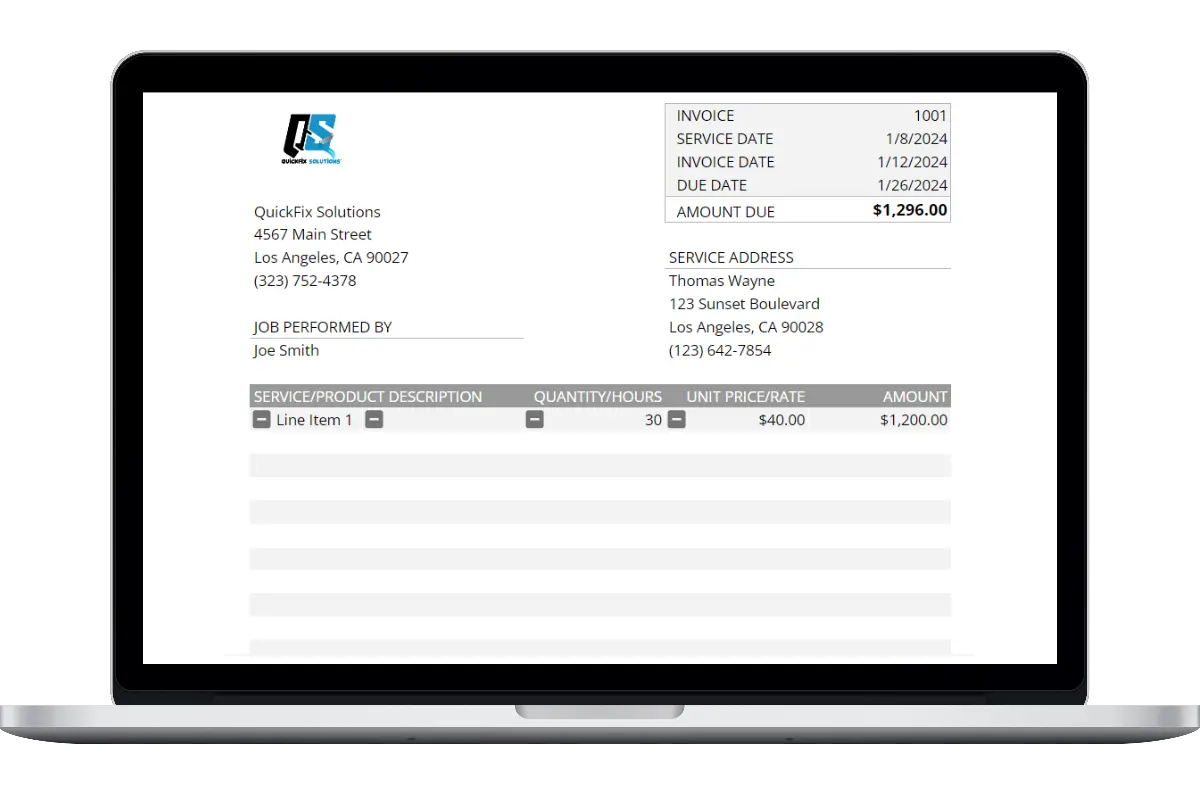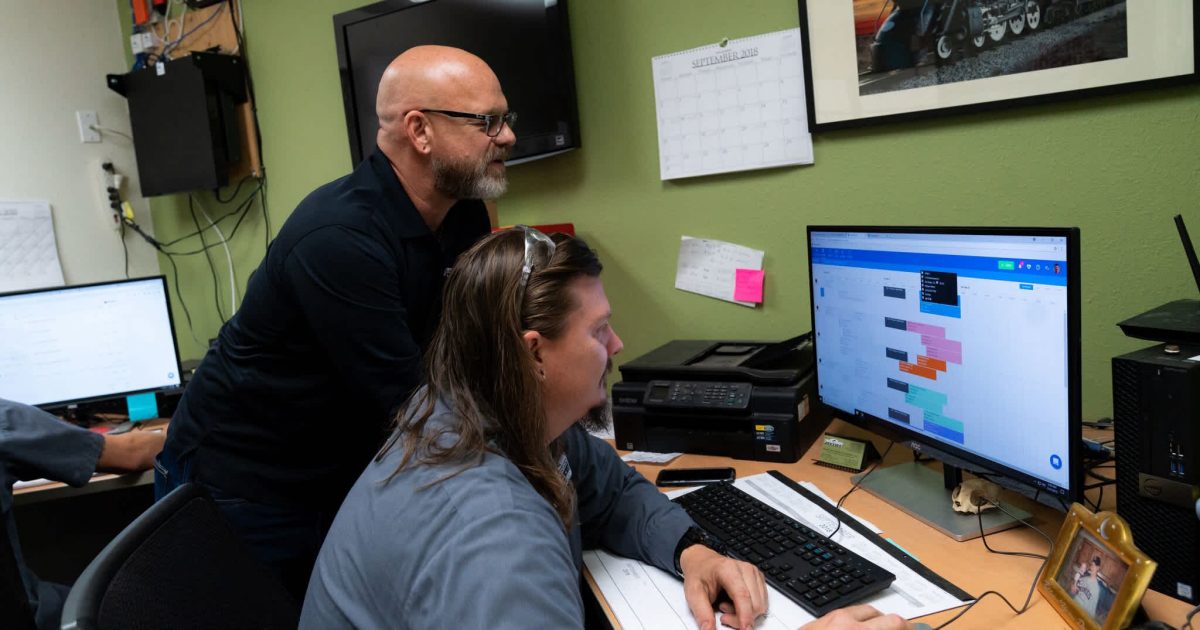
According to the Electrical Safety Foundation (EFSI), electrical accidents account for 6% of workplace fatalities. While the number of fatalities has dropped in recent years, this figure underscores the importance of workplace safety.
Creating a safe work environment should be one of your top priorities as a contractor or business owner. Fortunately, you can implement concrete safety measures to prevent electrical accidents in the workplace.
In this article, we’ll discuss how electrical contractors can ensure safety in the field.
- Identifying the Most Common Causes of Electrical Hazards
- How to Prevent Electrical Accidents in the Workplace
- 1. Conduct Regular Safety Audits
- 2. Start a Comprehensive Training Program
- 3. Use the Right Tools and Equipment
- 4. Enforce Compliance With OSHA Regulations
- 5. Establish Lockout/Tagout Procedures
- 6. Equip Workers With Personal Protective Equipment (PPE)
- 7. Foster a Safety-First Culture on Job Sites
- 8. Utilize Proper Signage and Labeling
- 9. Maintain Equipment and Electrical Systems Regularly
- 10. Have an Emergency Response Plan in Place
- Housecall Pro: Your Partner in Electrical Safety
Identifying the Most Common Causes of Electrical Hazards
Understanding the most common electrical hazards is the first step in creating a safe worksite. Stay on the lookout for these common electrical hazards when you’re out in the field:
- Exposed or faulty wiring: Loose, frayed wires are signs that the insulation is damaged. Accidental contact with live wires can cause electrical shocks or lead to fires.
- Wet conditions: Water conducts electricity by absorbing minerals and ions from its surroundings. Wet conditions near your worksite are a safety hazard and could increase the chances of electrocution.
- Damaged tools or equipment: Using defective or damaged tools or equipment exposes you and your crew to electric shocks and injuries.
- Exposed power lines: Overhead power lines carry high voltage. Coming in contact with exposed power lines can be fatal.
- Inadequate grounding: Improper grounding can cause electrical current to seek another way to ground itself. It can travel through random paths, injuring and killing people in its course.
What Are the Main Causes of Electrical Accidents?
A small issue, like a frayed wire or a loose cable, can quickly become a safety hazard, leading to a major accident on the worksite. You can prevent these hazards by staying alert and aware of the most common causes of electrical accidents. Most electrical accidents result from:
- Overloaded extension cords: Daisy-chaining is a common mistake on busy worksites. It happens when multiple pieces of equipment or tools are plugged into a single cord or socket. Doing this can overheat the cord, which could cause an electrical fire.
- Faulty circuit breaker: Circuit breakers cut off power in case of an overload. However, they may become faulty over time. This can lead to a major electrical incident.
- Inadequate Training: If your employees lack proper training, they may mishandle equipment or touch live wires, resulting in accidents.
How to Prevent Electrical Accidents in the Workplace
Electrical hazards on busy worksites can put you and your crew at great risk. Here are 10 ways to prevent electrical accidents in the workplace.
1. Conduct Regular Safety Audits
Research reveals that nearly 60% of businesses will see fewer worksite incidents when they track safety metrics and KPIs through safety audits. Safety audits help electrical contractors stay compliant with the latest regulations. They help you identify gaps or inconsistencies in your electrical systems, personnel training, and equipment.
You can reach out to third-party safety consultants to conduct periodic safety audits as a responsible business. The audit team will typically perform thorough checks to see if your electrical equipment, grounding, and wiring are properly installed and in good working condition. They will also check the site for overloaded circuits and improper installations that could cause electrical mishaps.
Aside from these checks, they may assess your internal workplace safety practices to ensure they comply with the latest safety standards. Based on their findings, the audit team will recommend corrective steps.
We recommend setting up a schedule of follow-up audits to review the effectiveness of your corrective efforts. Regular safety audits help you catch workplace hazards early, reducing injuries, costs, and downtime.
2. Start a Comprehensive Training Program
Training your employees on safe electrical procedures shouldn’t be a one-off scenario. Your employees should undergo extensive training periodically, where they learn about electrical hazards, regulatory standards, safety policies, and emergency response protocols.
The program should also include hands-on training modules and practical demonstrations of safety protocols. This will prepare your employees to handle specific emergencies. For example, if you or your crew frequently work on construction sites, you can implement a hands-on training program that teaches workers to handle insulated tools and identify hazardous live wires.
It’s also a good idea to schedule regular refresher training to keep your employees up-to-date on policy or regulatory changes.
3. Use the Right Tools and Equipment
To reduce the danger of an accident, ensure your team only uses high-quality machinery with safety features. For example, electrical contractors may need to work on high-voltage systems as part of their job. In such instances, they must only use tools with insulated handles, non-conductive materials, and an auto shut-off system.
You must also ensure your team can follow manufacturer guidelines when using tools. Modifying or misusing electrical tools by bypassing their safety mechanisms can cause serious mishaps.
4. Enforce Compliance With OSHA Regulations
Whether you own an electrical business or work as an independent electrical contractor, you must follow Occupational Safety and Health Administration (OSHA) regulations when working on-site. This is not just a legal obligation but an integral part of workplace safety.
OSHA’s framework highlights key safety guidelines. For instance, according to the OSHA Standard 1910.303, you must ensure proper wiring and grounding when installing electrical equipment. You must also ensure your employees maintain a safe distance from live electrical parts while working, according to the OSHA Standard 1910.333. Complying with these OSHA guidelines can save lives and your company from hefty penalties.
Many companies have benefitted from complying with OSHA’s safety regulations. The most recent example is a Des Moines-based contractor who consulted with OSHA’s Iowa chapter. During this consultation, OSHA identified 42 hazards on the contractor’s construction site and helped them take corrective action to reduce injuries.
5. Establish Lockout/Tagout Procedures
Did you know that, according to OSHA figures, implementing Lockout/Tagout (LOTO) procedures can save up to 120 lives each year and prevent 50,000 injuries? During maintenance and repair phases, you can follow these LOTO procedures and steps:
- Isolate electrical equipment from their power supply.
- Lock out the power source to prevent restarting.
- Release any stored energy from the machinery.
- Use tagout devices to warn workers against operating the machinery.
Get In Touch: 858-842-5746
Let us earn your trust
On average, Pros increase monthly revenue generated through Housecall Pro by 50% after their first year.
See plan options and feature breakdown on our pricing page.
6. Equip Workers With Personal Protective Equipment (PPE)
Personal Protective Equipment, or PPE, is more effective in ensuring workplace safety than you think. They can be a lifesaver in most instances involving electrical equipment, lowering occupational injury incidents by 37.6%.
Ensure you provide your workers with commonly used PPE such as insulated gloves, safety boots, face shields, and arc flash and flame-resistant clothing. In areas with electrical equipment, you must use insulating or rubber mats to protect your team against shocks. For heavy manufacturing tasks, workers should also wear flame-resistant clothing.
You can create and use a PPE inspection checklist to guarantee your team receives complete protection. Long-term use of these kits can reduce effectiveness, so inspecting them regularly is crucial. Also, educate your workers on using each PPE so they know when and where to use it.
7. Foster a Safety-First Culture on Job Sites
When your employees embrace safety procedures as part of the company culture, they’re more likely to internalize safety measures daily.
Employees who take personal responsibility for maintaining a safe workplace will exercise greater care in their work. In the long term, this lowers the risk of accidents by 70%. You can foster a safety-first culture by:
- Encouraging leaders and supervisors to prioritize safety measures, setting an example for subordinates to follow
- Offering regular on-site training on safety protocols
- Encouraging open conversations about safety concerns and challenges. For example, you can implement a “see something, say something” policy to garner safety feedback.
- Setting up a system to report safety inconsistencies. For example, you can set up a safety hotline or encourage your team to report safety issues via a safety reporting app.
- Rewarding safe conduct to encourage others to follow suit
Learn more: How to Create an Employee Handbook
8. Utilize Proper Signage and Labeling
Clear labels and signs can help you and your workers prevent missteps or lapses in attention that could cause accidents. Safety signages create clear visual reminders about electrical safety, reducing workplace accidents considerably.
OSHA identifies three main types of signs you can use on a work site. This includes danger signs, caution signs, and general safety information labels.
You can use signage to mark potential hazards and safety zones, such as those near control rooms or electrical panels. For example, you can warn workers about high-voltage machinery by using a lightning bolt symbol or a “Danger: High Voltage” sign. You can also use bold electric panel labels to indicate their voltage levels.
Use color-coded labels to distinguish between different types of electrical equipment. For example, you can use red labels to signify emergency circuits and green to signify grounding devices. Most importantly, ensure you and your workers understand what each sign or label represents.
9. Maintain Equipment and Electrical Systems Regularly
Regular equipment checks aren’t just a compliance issue. They’re integral to workplace safety and help avoid unexpected machine failures and injuries. The National Safety Council (NSC) reported that injuries from worksite equipment were the third-leading cause of workplace death in 2021-2022.
Routine servicing and testing of electrical installations can help you avoid unexpected accidents. This includes scheduling regular weekly, monthly, or quarterly inspections of electrical systems and machinery based on their usage and risk level. You should also plan regular maintenance to lubricate and clean equipment.
Depending on your location, you may also need to perform seasonal maintenance. For example, humidity or rainy weather can affect electrical systems, prompting the need for additional cleaning. Aside from technical maintenance, you must ensure that electrical systems and equipment are clean and debris-free. This can help prevent overheating and fires.
10. Have an Emergency Response Plan in Place
Despite taking the necessary measures, things could still go wrong on your worksite. Drafting an emergency response plan is one of the best ways to handle unexpected electrical accidents at work.
The plan should include everything from providing first aid and calling emergency services to evacuation arrangements, if necessary. You could also include additional steps in this plan, such as shutting down machinery and administering lifesaving procedures like CPR.
The Federal Emergency Management Agency (FEMA) advocates practicing exercises and emergency drills to build preparedness. It also recommends referring to an extensive safety checklist during an emergency. Make sure you share and discuss the plan with your team members so they’re ready to respond.
Housecall Pro: Your Partner in Electrical Safety
When you manage an electrical business, providing technical services is just one part of the job. You must also handle day-to-day operations like managing clients and invoices and communicating with team members. To do this and do it well, you need reliable tools that simplify operations and make daily business efficient. A trustworthy electrical contractor software can help ease your business management burden.
You can ensure both efficient and safe work environments by looking for these features in business management software:
- Customizable job checklists to ensure key safety protocols are in place
- Payroll management features that allow you to track employee hours and overtime and calculate pay accordingly
- In-app chat features that facilitate more efficient communication and collaboration
- Automated booking, invoicing, and client management features
- Safety assurance with downloadable job hazard and safety analysis (JSA) templates
Build a Safer Work Environment with Housecall Pro
Maintaining a safe work environment should be a priority, especially as your electrical business scales to new heights. Let Housecall Pro shoulder some of the responsibility and help you build a safer, more efficient, and more profitable business. Take the first step toward creating a safer work environment with Housecall Pro today.
Frequently Asked Questions
- What should be included in an electrical safety audit?
-
An electrical safety audit should thoroughly examine all equipment and machinery. It should also review grounding and earthing requirements and check for compliance with safety standards. Lastly, it should identify any risks or potential hazards on a worksite.
- How often should electrical safety training be conducted?
-
Employees on a worksite must receive electrical safety training at least once a year. They should also receive refresher courses and additional safety updates at quarterly intervals, if necessary.
- How can electrical contractors ensure compliance with OSHA regulations?
-
OSHA mandates that electrical contractors regularly review and update their employees about safety guidelines. Contractors can also ensure compliance by conducting timely safety audits, maintaining up-to-date safety records, and providing PPE kits to their employees in the field
- What are the benefits of having an emergency response plan?
-
An emergency response plan reduces stress and panic, ensures preparedness, and saves precious response time during accidents. It also helps lower the severity of injury and damage.






